
Summit Avenue was the showcase street of Quality Hill, running south from West 7th Street to the front gate of Thistle Hill (see below) on Pennsylvania Avenue. Today the street is lined with commercial property, but a century ago the street was lined with fine houses. Among the residents on the left side of the street in this view was attorney Thomas D. Ross; on the right, cattlemen Christopher Augustus O’Keefe and John Bunyan Slaughter. Note the streetcar tracks. Passengers could ride from Fostepco Heights on the North Side south to downtown on Main Street, west on 7th Street, south on Summit, jog at Thistle Hill to 8th Avenue and ride all the way to the Texan auto plant on the Cleburne Pike (McCart Avenue). (P0stcard from Barbara Love Logan.)
Below are among the few surviving houses of Quality Hill (see Part 1 and Part 2).
Today the showcase street of Quality Hill survivors is Pennsylvania Avenue with eight homes, half of them part of the Woman’s Club compound.
Let’s start on the east and move westward:

1119 Pennsylvania Avenue (1916). Fountain Goodlet Oxsheer was a cattleman.
 1226 Pennsylvania Avenue (1907). Emory Thayer Ambler co-owned a huge ranch in Lynn and Garza counties with Cass Edwards and another rancher. In 1906 Thayer sold his holdings to C. W. Post and moved to Fort Worth. In 1907 Ambler had this L. B. Weinman-designed house built. Ambler’s daughter Grace married Samuel Benton Cantey Jr., whose father and William Capps (see below) had founded Fort Worth’s oldest continuously operated law firm in 1882. Gordon Boswell bought the house in 1926 and built a florist shop next door.
1226 Pennsylvania Avenue (1907). Emory Thayer Ambler co-owned a huge ranch in Lynn and Garza counties with Cass Edwards and another rancher. In 1906 Thayer sold his holdings to C. W. Post and moved to Fort Worth. In 1907 Ambler had this L. B. Weinman-designed house built. Ambler’s daughter Grace married Samuel Benton Cantey Jr., whose father and William Capps (see below) had founded Fort Worth’s oldest continuously operated law firm in 1882. Gordon Boswell bought the house in 1926 and built a florist shop next door.
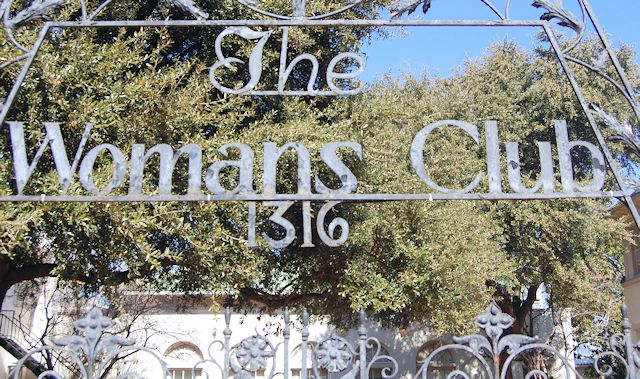 The north side of the 1300 block of Pennsylvania Avenue, just west of the Ambler house, is the compound of the Woman’s Club. The compound includes four Quality Hill houses.
The north side of the 1300 block of Pennsylvania Avenue, just west of the Ambler house, is the compound of the Woman’s Club. The compound includes four Quality Hill houses.
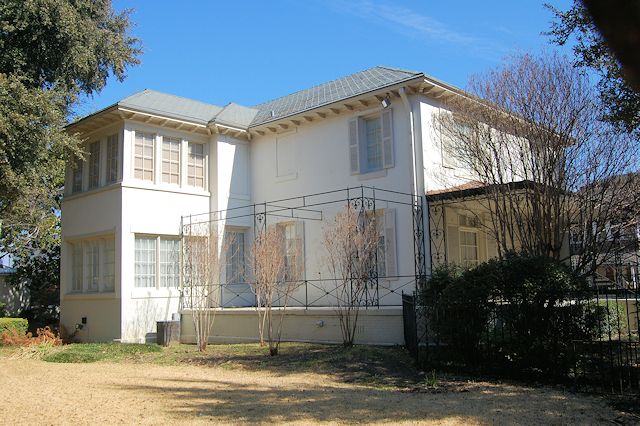
At 1302 this house was built in 1911 for banker William R. Edrington, who had bought the lot from developer John C. Ryan. The Woman’s Club bought the property in 1924. The house has been severely remodeled and today is Florence Shuman Hall.
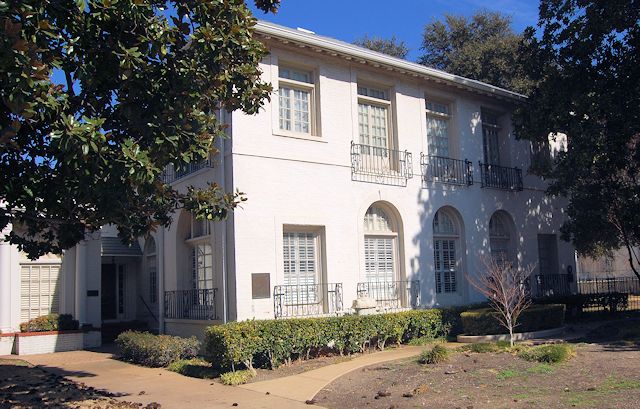 The house at 1316 Pennsylvania Avenue was built in 1912 for Herman Frerichs, a German national who was a buyer for German cotton brokers.
The house at 1316 Pennsylvania Avenue was built in 1912 for Herman Frerichs, a German national who was a buyer for German cotton brokers.
 In 1914 while traveling in Germany he joined the German army to fight in World War I. When his family members tried to reenter the United States they were not allowed in because the U.S. government suspected that Frerichs was a German spy. In 1917 the house and contents were seized by the federal government as “alien property.” In 1923 Etta Newby, widow of banker William G. Newby, bought the house and donated it to the Woman’s Club as the William G. Newby Memorial.
In 1914 while traveling in Germany he joined the German army to fight in World War I. When his family members tried to reenter the United States they were not allowed in because the U.S. government suspected that Frerichs was a German spy. In 1917 the house and contents were seized by the federal government as “alien property.” In 1923 Etta Newby, widow of banker William G. Newby, bought the house and donated it to the Woman’s Club as the William G. Newby Memorial.
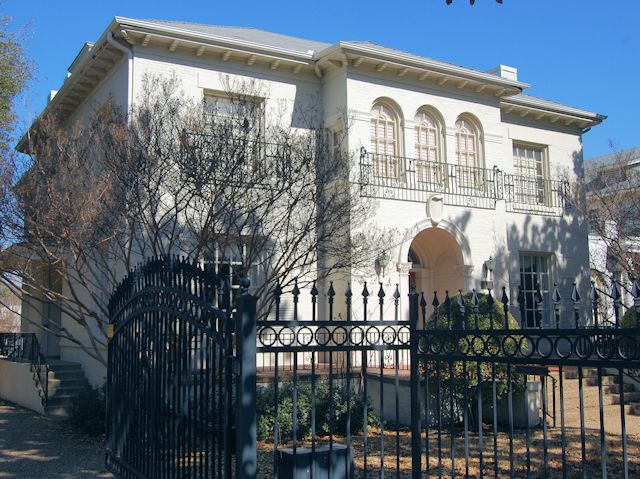 The house next door at 1320 Pennsylvania Avenue was built about 1903 for another cotton man: Morris Berney. The next owner was banker Henry Clay Edrington. Edrington’s grandson William Edrington Scott’s foundation funded construction of Scott Theater. The house became part of the Woman’s Club compound in 1929. The house is now Ira Saunders Hall. (Photo from University of Texas at Arlington Libraries.)
The house next door at 1320 Pennsylvania Avenue was built about 1903 for another cotton man: Morris Berney. The next owner was banker Henry Clay Edrington. Edrington’s grandson William Edrington Scott’s foundation funded construction of Scott Theater. The house became part of the Woman’s Club compound in 1929. The house is now Ira Saunders Hall. (Photo from University of Texas at Arlington Libraries.)
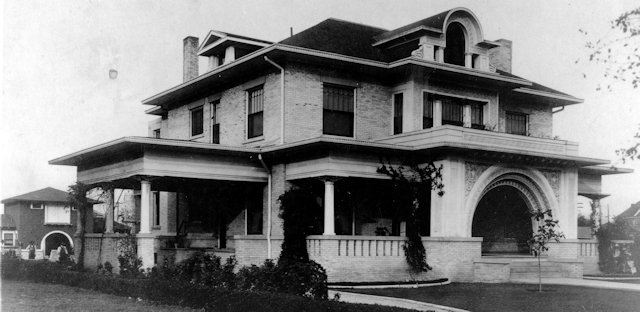 At some point the house was remodeled within an inch of its life: The porte-cochere, front porch roof and balustrade, and dormer windows were removed. (Photo from University of Texas at Arlington Libraries.)
At some point the house was remodeled within an inch of its life: The porte-cochere, front porch roof and balustrade, and dormer windows were removed. (Photo from University of Texas at Arlington Libraries.)
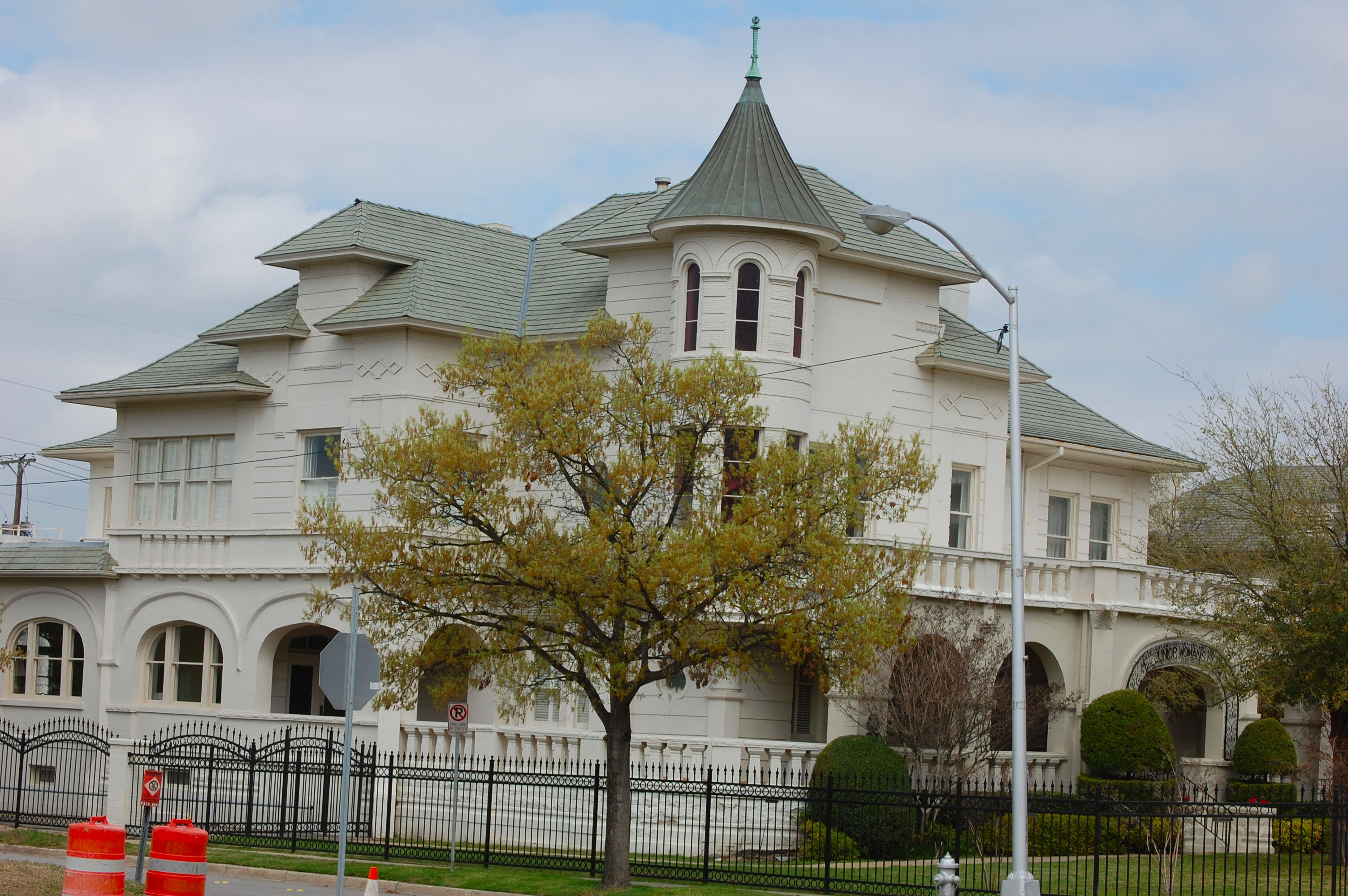 This architectural eye candy at 1326 Pennsylvania Avenue, a mix of Queen Anne, mission revival, and prairie styles, was designed by L. B. Weinman and built in 1906 for real estate millionaire James F. Moore. The Woman’s Club bought the building from Robertson-Mueller-Harper funeral home in 1953, giving the club possession of the entire block. The house is now Margaret Meacham Hall.
This architectural eye candy at 1326 Pennsylvania Avenue, a mix of Queen Anne, mission revival, and prairie styles, was designed by L. B. Weinman and built in 1906 for real estate millionaire James F. Moore. The Woman’s Club bought the building from Robertson-Mueller-Harper funeral home in 1953, giving the club possession of the entire block. The house is now Margaret Meacham Hall.
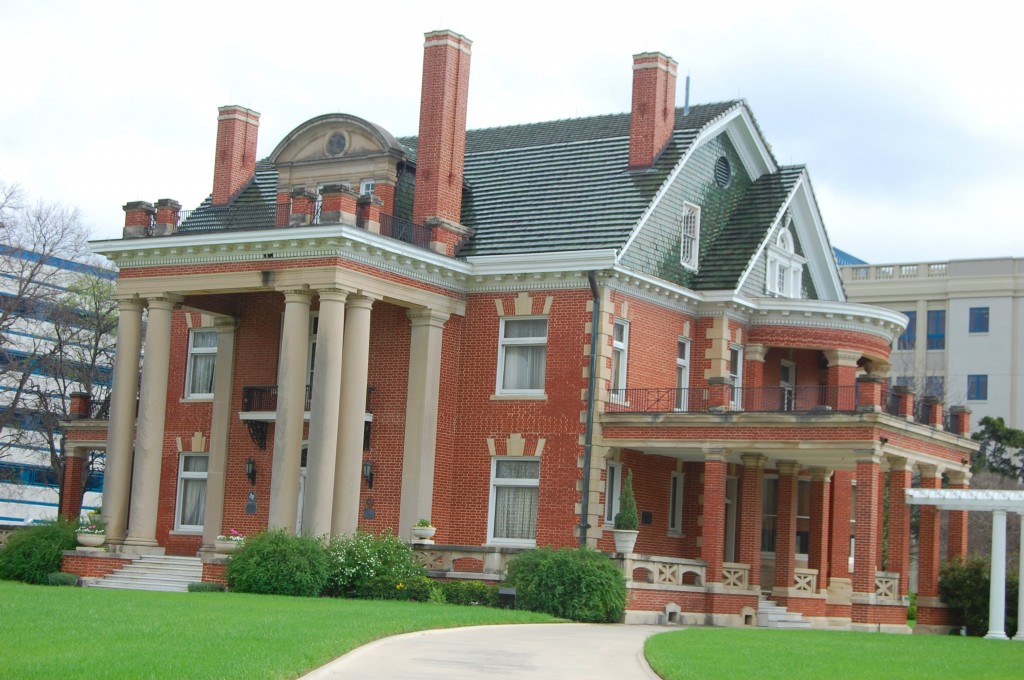 1509 Pennsylvania Avenue (1904). The Wharton-Scott house is now known as “Thistle Hill.” Marshall Sanguinet and Carl Staats, Fort Worth’s leading architects, designed the $46,000 ($1.1 million today) house in Georgian revival style for Electra Waggoner and Albert Buckman Wharton (see Part 1).
1509 Pennsylvania Avenue (1904). The Wharton-Scott house is now known as “Thistle Hill.” Marshall Sanguinet and Carl Staats, Fort Worth’s leading architects, designed the $46,000 ($1.1 million today) house in Georgian revival style for Electra Waggoner and Albert Buckman Wharton (see Part 1).
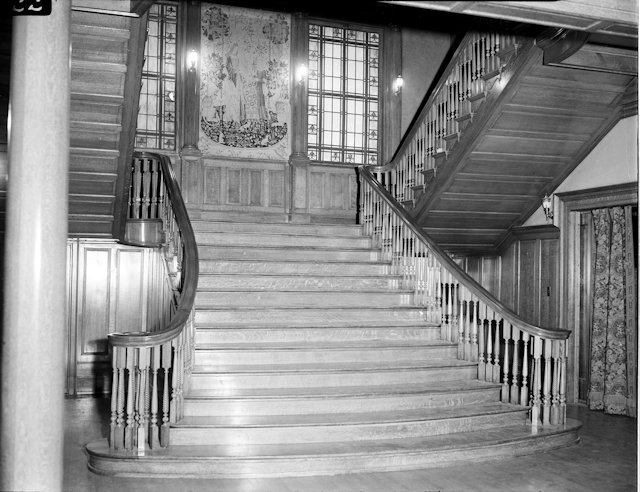
The staircase of 1509 Pennsylvania Avenue in 1940, when the house was the home of the Girls Service League. (Photo from University of Texas at Arlington Libraries.)
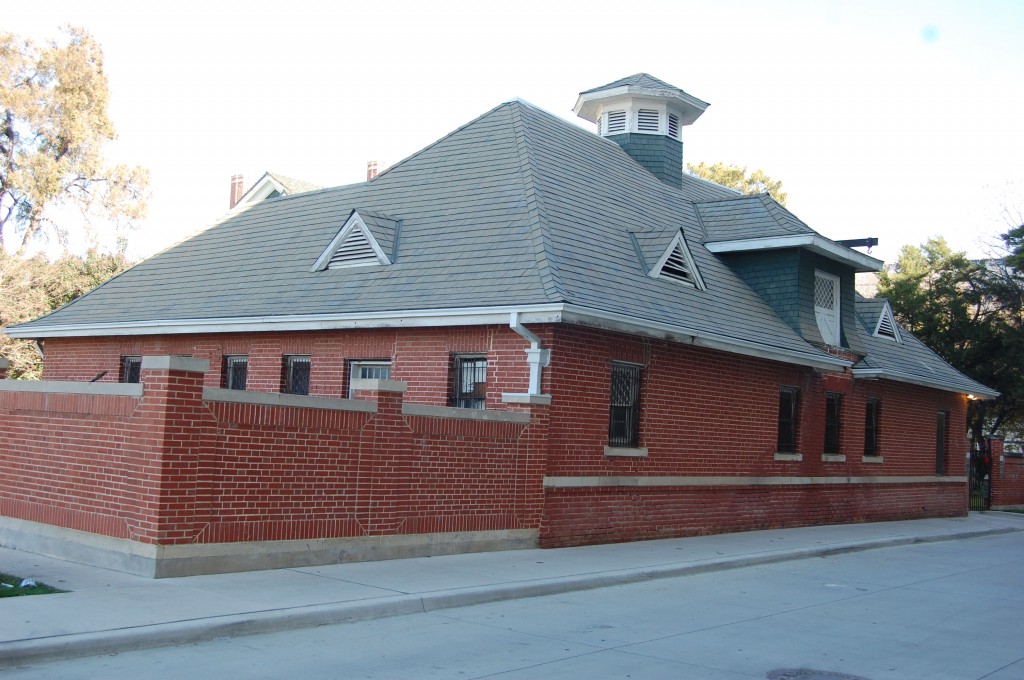 The grounds of 1509 Pennsylvania Avenue include this brick carriage house, also designed by Sanguinet and Staats.
The grounds of 1509 Pennsylvania Avenue include this brick carriage house, also designed by Sanguinet and Staats.
 The grounds of 1509 Pennsylvania Avenue also once had a lighthouse-like water tower. The carriage house is on the right. (Photo from Greater Fort Worth, 1907.)
The grounds of 1509 Pennsylvania Avenue also once had a lighthouse-like water tower. The carriage house is on the right. (Photo from Greater Fort Worth, 1907.)
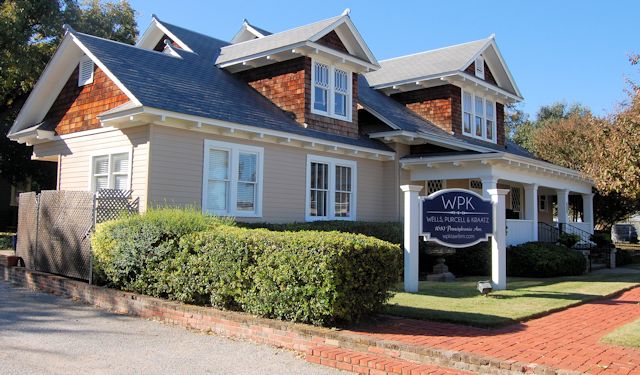 1619 Pennsylvania Avenue (1916). Finally, west of 8th Avenue is the Brookshire house. Samuel Nathan Brookshire (1861-1940) was a paving contractor.
1619 Pennsylvania Avenue (1916). Finally, west of 8th Avenue is the Brookshire house. Samuel Nathan Brookshire (1861-1940) was a paving contractor.
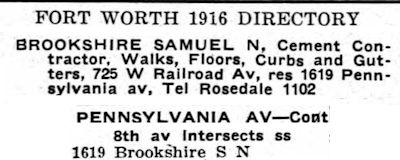
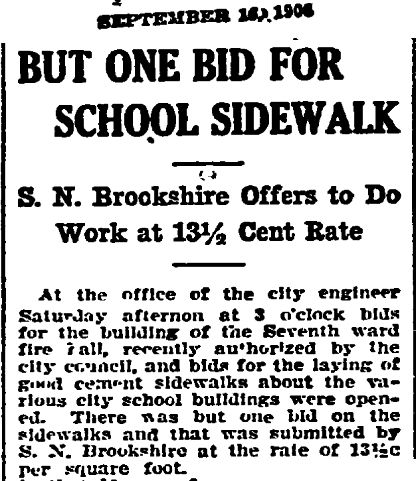
Brookshire came to town about 1885.
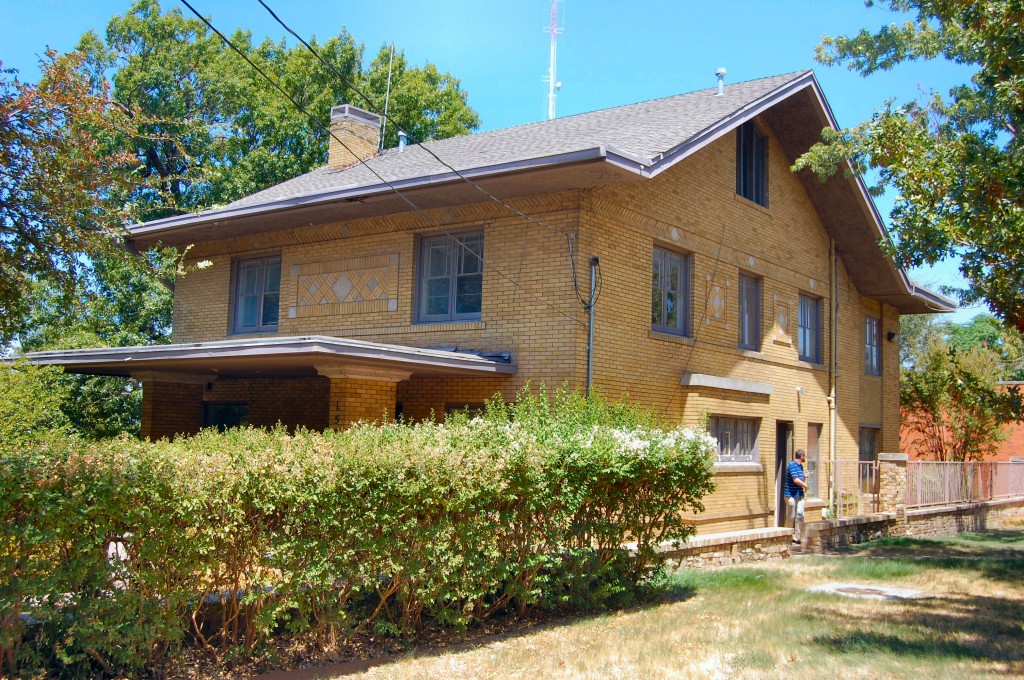 Elsewhere on Quality Hill, at 1598 Sunset Terrace (1904) Lyman Cobb was a brick and cattle dealer.
Elsewhere on Quality Hill, at 1598 Sunset Terrace (1904) Lyman Cobb was a brick and cattle dealer.
 1600B Sunset Terrace (1910). The grand home of cattleman William Reynolds is long gone. This is just his carriage house, which was converted into a home.
1600B Sunset Terrace (1910). The grand home of cattleman William Reynolds is long gone. This is just his carriage house, which was converted into a home.
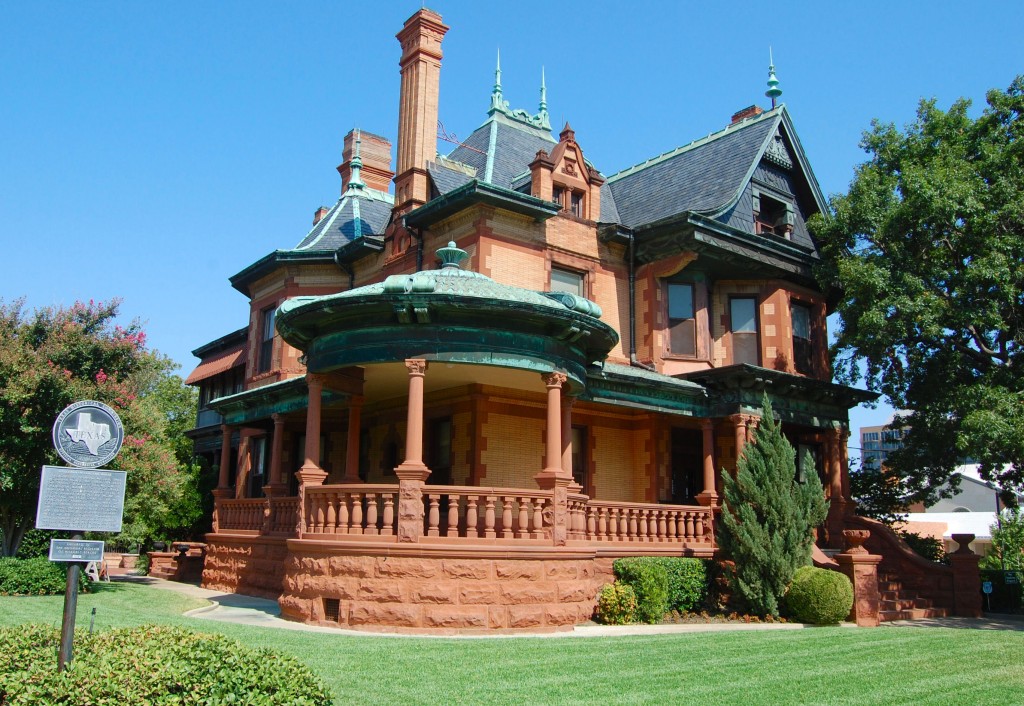 1110 Penn Street (1899). Ball-Eddleman-McFarland house. Frank Ball was a “capitalist.” William Eddleman was a banker. Carrie McFarland was Eddleman’s daughter.
1110 Penn Street (1899). Ball-Eddleman-McFarland house. Frank Ball was a “capitalist.” William Eddleman was a banker. Carrie McFarland was Eddleman’s daughter.
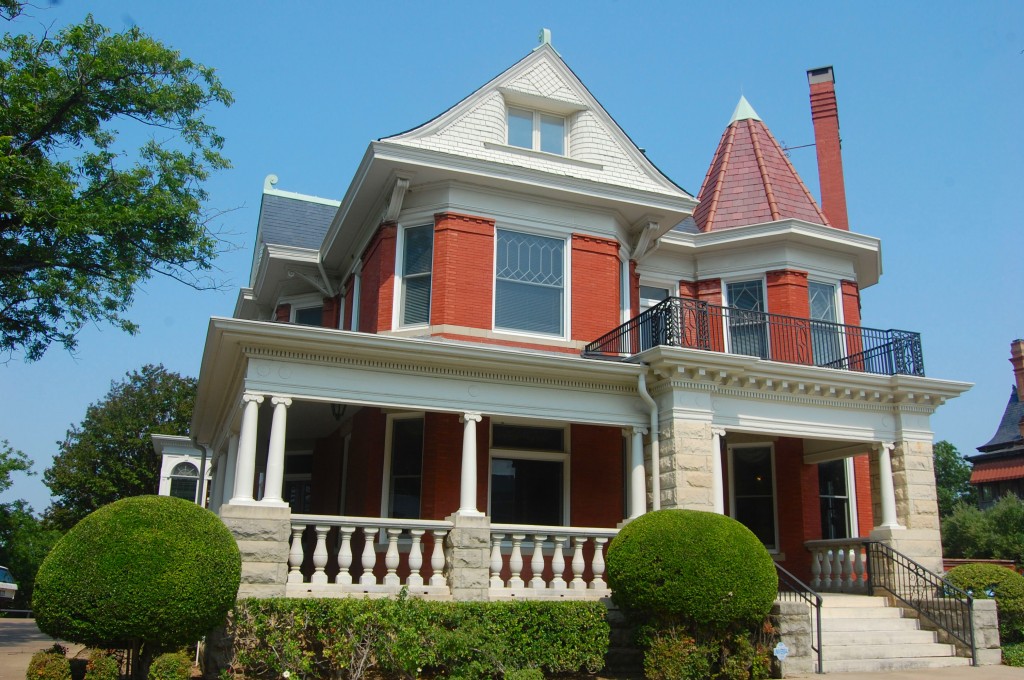 1120 Penn Street (1899). Pollock-Capps house. This home was built for Dr. Joseph R. Pollock, a homeopathic physician. In 1909 attorney William Capps and his wife Sallie bought the house. William Capps died there in 1925 at age sixty-seven. The Queen Anne Victorian mansion is built of red brick and limestone with a slate roof and copper finials. Originally the grounds overlooking the river included a golf course and tennis court. The three-bay carriage house had a ballroom upstairs. The law firm that Capps co-founded in 1882 with Samuel Benton Cantey continues as Cantey Hanger. Fittingly, the Pollock-Capps house now houses a law firm.
1120 Penn Street (1899). Pollock-Capps house. This home was built for Dr. Joseph R. Pollock, a homeopathic physician. In 1909 attorney William Capps and his wife Sallie bought the house. William Capps died there in 1925 at age sixty-seven. The Queen Anne Victorian mansion is built of red brick and limestone with a slate roof and copper finials. Originally the grounds overlooking the river included a golf course and tennis court. The three-bay carriage house had a ballroom upstairs. The law firm that Capps co-founded in 1882 with Samuel Benton Cantey continues as Cantey Hanger. Fittingly, the Pollock-Capps house now houses a law firm.
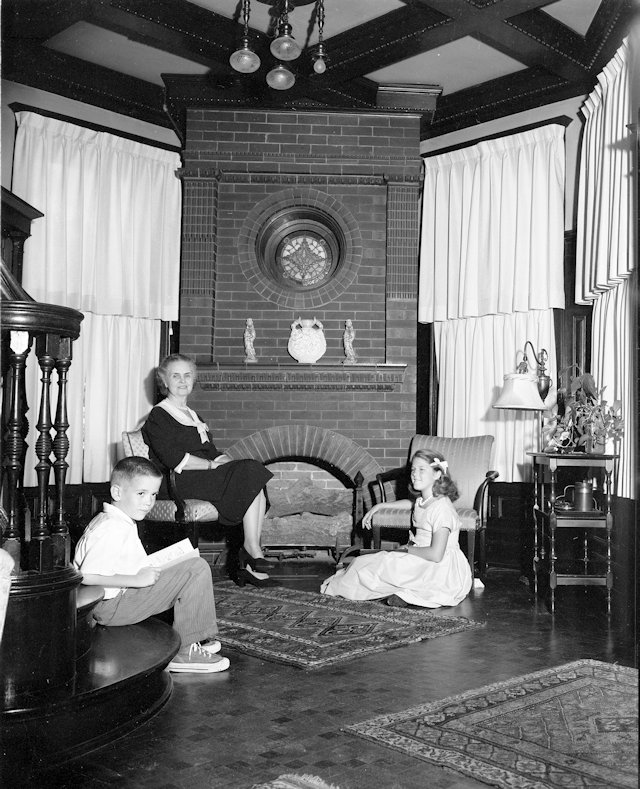
1120 Penn Street in 1958. Mrs. Frank M. Anderson and her grandchildren in the sitting room. (Photo from University of Texas at Arlington Libraries.)
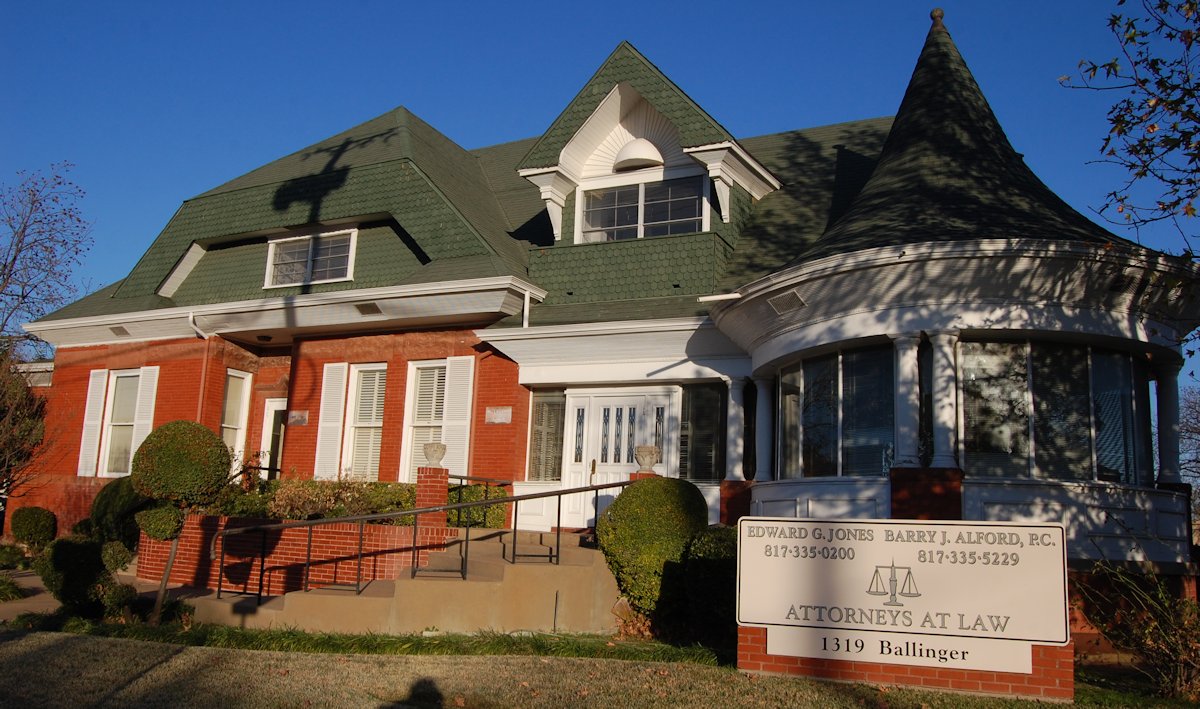 1318 Ballinger Street (1899). James W. Swayne was a lawyer and judge.
1318 Ballinger Street (1899). James W. Swayne was a lawyer and judge.
 The street address was changed from El Paso Street to Ballinger Street when the house was converted to a commercial building in 1954.
The street address was changed from El Paso Street to Ballinger Street when the house was converted to a commercial building in 1954.
 1301 Ballinger Street (1916). Leon Gross (1866-1945) was president of Washer Brothers Department Store.
1301 Ballinger Street (1916). Leon Gross (1866-1945) was president of Washer Brothers Department Store.
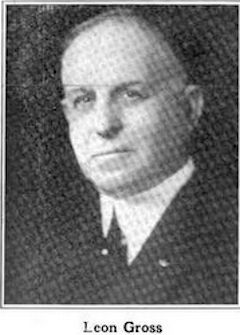
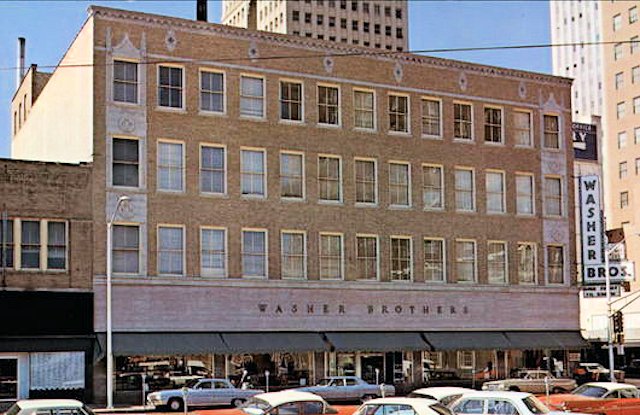 In 1882 Nat and Jacob Washer had established Washer Brothers Clothiers, which evolved into one of the better department stores in town.
In 1882 Nat and Jacob Washer had established Washer Brothers Clothiers, which evolved into one of the better department stores in town.
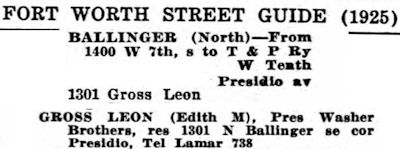 Leon Gross became president of the company in 1907 upon the death of Jacob Washer. Gross also was president of the board of trade (forerunner of the chamber of commerce), an early member of River Crest Country Club, and a founding member of Beth-El Congregation.
Leon Gross became president of the company in 1907 upon the death of Jacob Washer. Gross also was president of the board of trade (forerunner of the chamber of commerce), an early member of River Crest Country Club, and a founding member of Beth-El Congregation.
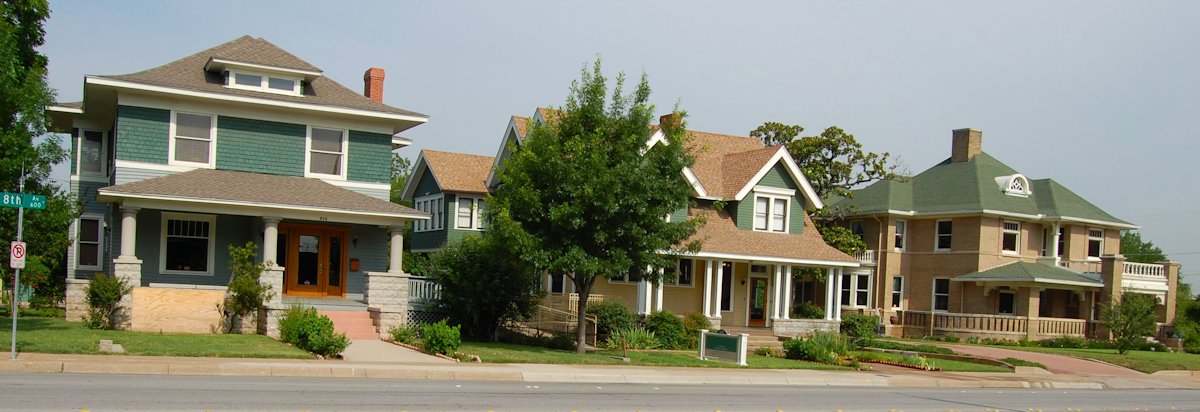 These three houses in the 600 block of 8th Avenue are more-modest survivors on the south end of Quality Hill. From left to right, Irion house at 612 (1910), Scott house at 608 (1909), and Mitchell-Schoonover house at 600 (1907).
These three houses in the 600 block of 8th Avenue are more-modest survivors on the south end of Quality Hill. From left to right, Irion house at 612 (1910), Scott house at 608 (1909), and Mitchell-Schoonover house at 600 (1907).
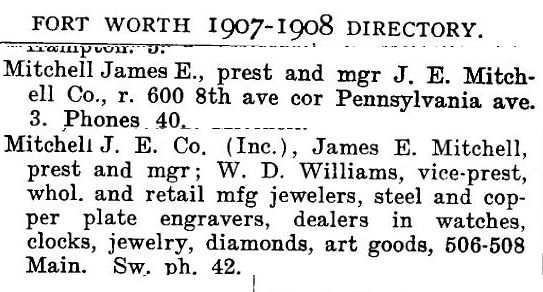 James E. Mitchell was a jeweler. He hired Sanguinet and Staats to design his house.
James E. Mitchell was a jeweler. He hired Sanguinet and Staats to design his house.
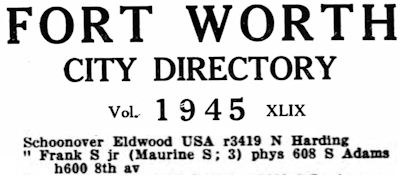 Dr. Frank Schoonover Jr. bought the house in 1945.
Dr. Frank Schoonover Jr. bought the house in 1945.
 Johann Walker Irion was a physician.
Johann Walker Irion was a physician.
Winfield Scott lived in the “little” Scott house on 8th Avenue at least part of the time while he was having the big Scott house (Thistle Hill) remodeled. But Scott died eight months after buying Thistle Hill.
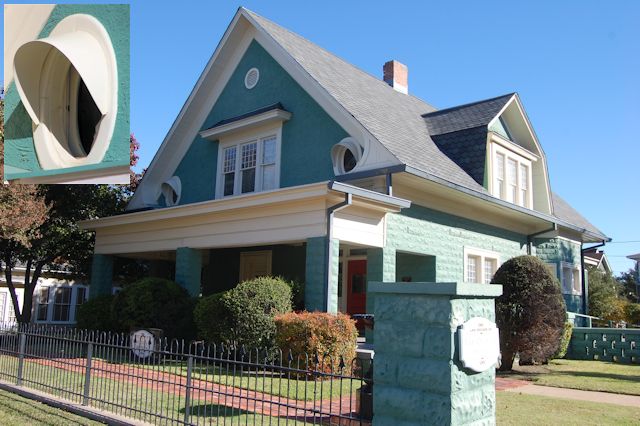 611 9th Avenue (circa 1900). West of the 8th Avenue trio is the Durham house, first occupied by Thomas W. Slack, a banker. Note the visored oval windows.
611 9th Avenue (circa 1900). West of the 8th Avenue trio is the Durham house, first occupied by Thomas W. Slack, a banker. Note the visored oval windows.
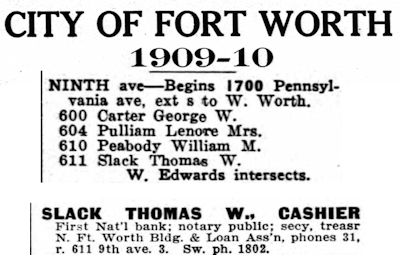 The Durham house was later occupied by the Arnold family and then the Durham family. The house is now a law office.
The Durham house was later occupied by the Arnold family and then the Durham family. The house is now a law office.
And finally, there is this Quality Hill survivor:
 2725 Scott Avenue (1898). But you won’t find Scott Avenue or this house on Quality Hill. You’ll find them in Meadowbrook.
2725 Scott Avenue (1898). But you won’t find Scott Avenue or this house on Quality Hill. You’ll find them in Meadowbrook.
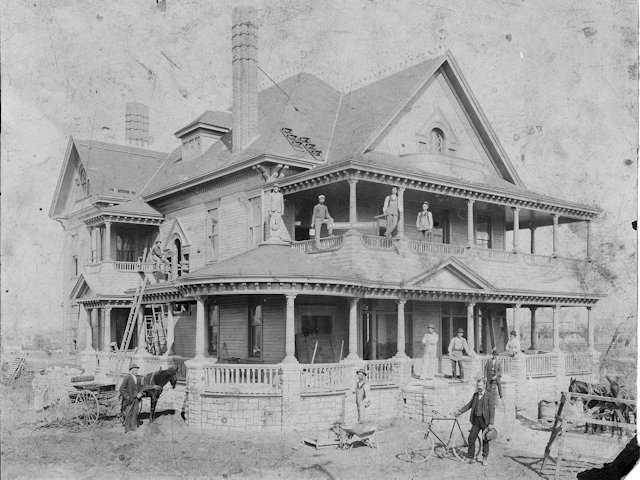
Some history: Hyde Jennings (1856-1903), son of Texas Attorney General (1852-1856) Thomas Jefferson Jennings, came to Fort Worth in 1872. In 1898 he built this house on Quality Hill at 1131 Summit Avenue at West Lancaster. The architect was A. N. Dawson, who also designed the mansion of E. E. Chase. Hyde Jennings was an attorney and judge. He also developed two additions, one downtown and the other in Handley, which originally were land grants given to his mother Sarah by the Republic of Texas for the service of her first husband, Lawrence S. Mason, during the revolution in 1835. Hyde’s son K. V. Jennings (1879-1930) later lived in the house. The photo was taken by one of the Swartz brothers.
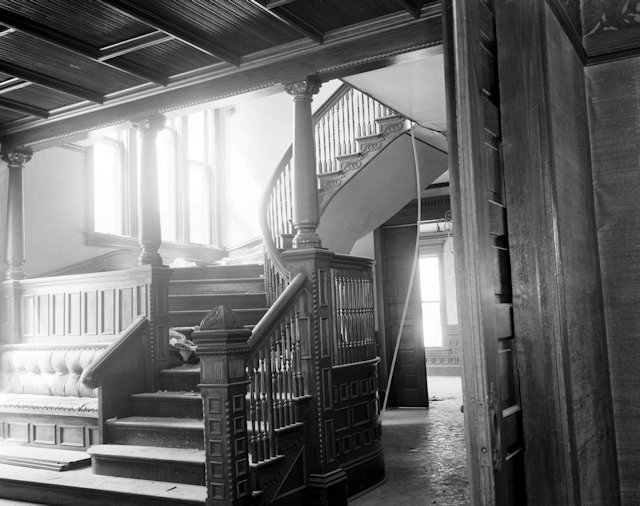
Mahogany staircase of the Jennings house in 1947. (Photo from University of Texas at Arlington Libraries.)

In 1947 Mr. and Mrs. Raymond Sharp bought the Jennings house for $2,000 ($22,000 today). Its roof and attic were removed. Then the house was cut in half from front to rear. This photo shows the house as it was being prepared to be moved. (Photo from University of Texas at Arlington Libraries.)
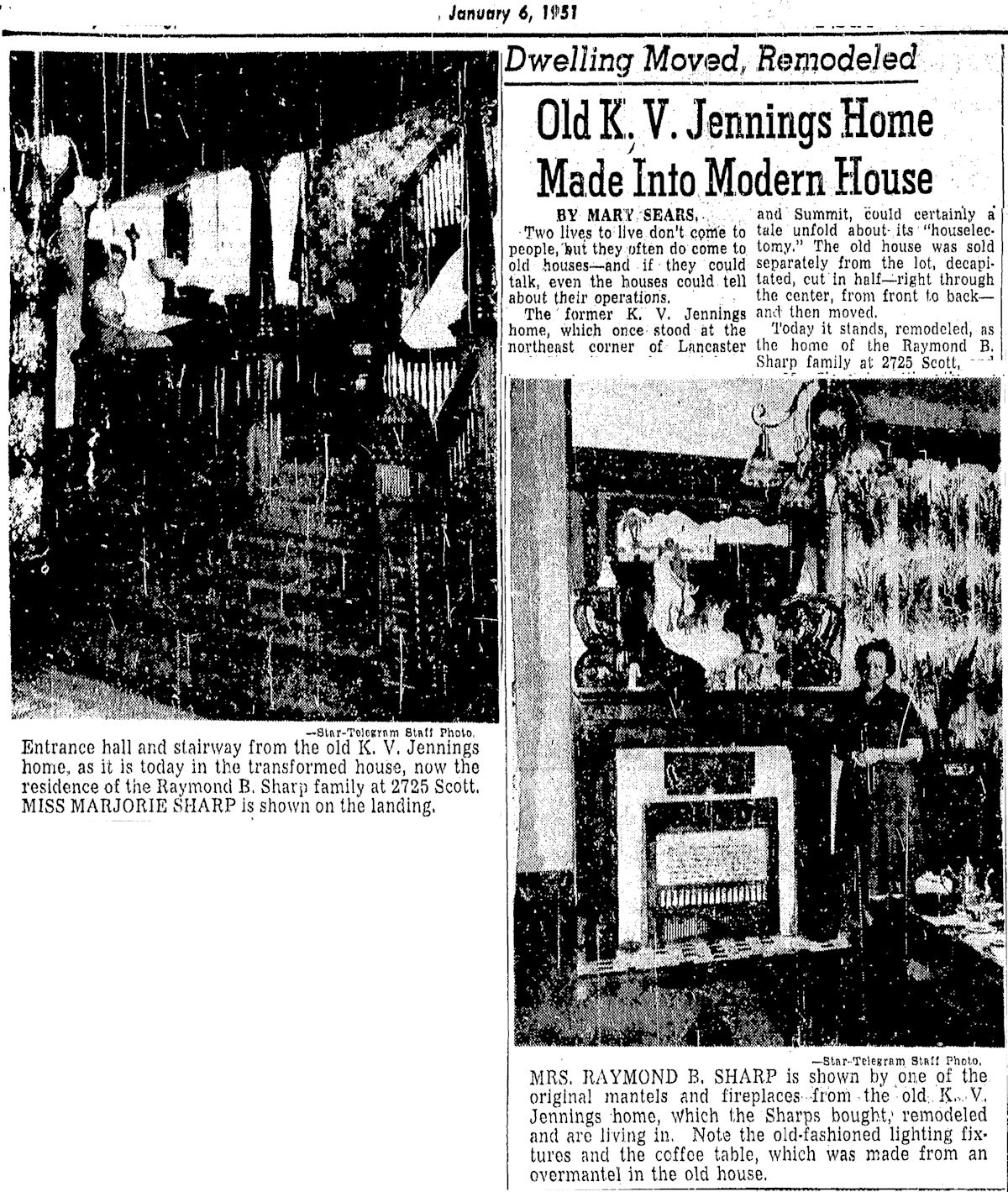 The pieces of the house were moved across town to Scott Avenue and rejoined.
The pieces of the house were moved across town to Scott Avenue and rejoined.
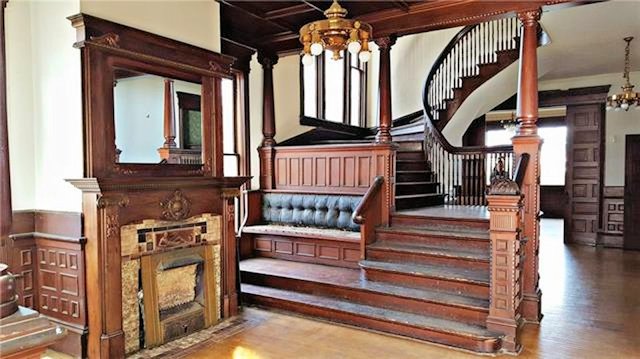 The staircase of the Jennings house today.
The staircase of the Jennings house today.
But as the recent exterior photo shows, the exterior of the house has been much changed over the years. The attic and original roofline, along with the porches on the ground and second floors, were eliminated, leaving only the “box” of the first and second floors.
Still, the fate of the Jennings house is better than the fate that befell most of the houses on Quality Hill.
Silk Hats and Spats (Part 4): Amid the “Have”s, the “Have-Not”s






Does anyone remember the house that was demolished around 1997-98 somewhere around Summit between 10th and Texas? Maybe between Ballinger and Collier but i can’t remember for sure. They had it open for salvage a few days–I went through it with a couple of colleagues. No idea whose house it had been but it had been grand at one time.